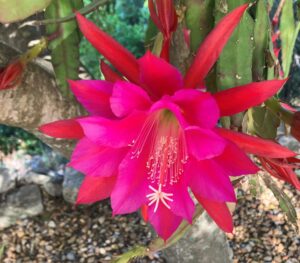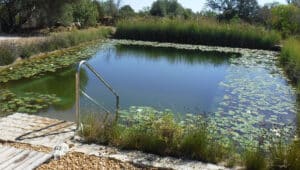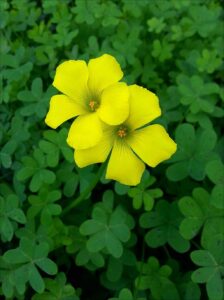Making wreaths from evergreen foliage is enjoying a welcome revival as a more natural and sustainable decoration
The winter solstice, the longest night of the year, falls on December 21 in the Northern Hemisphere. Since ancient times, people all over the world have recognized this important astronomical occurrence and celebrated the subsequent “return” of the Sun in a variety of different ways.
Old solstice traditions have influenced mid-winter celebrations such as Christmas and the pre-Christian Roman Saturnalia. Plants and trees have always played an important role in these celebrations. Making wreaths from evergreen foliage is enjoying a welcome revival as a more natural and sustainable decoration.
The festival of Saturnalia is perhaps the most closely linked with the modern celebration of Christmas. This festival happened around the time of the winter solstice and celebrated the end of the autumn planting season. There were games and feasts and gift-giving for several days, and social order was inverted – slaves did not work and were briefly treated as equals.
Have you ever stopped to think why, in the middle of winter, we decorate our homes at Christmas using evergreen trees, branches, leaves, or winter blooming plants? The origins of Christmas and its botanical symbology can be found in the deep history of ancient peoples of Europe who had a deep connection to the natural world.
They celebrated the passing of the seasons and, in particular, held reverence for the sun which was venerated annually to mark the winter solstice, the return from darkness to light and the renewal of life. Some believed the sun stood still for a period of 12 days, so a log was lit to vanquish the dark, evil spirits and bring luck for the coming year. This was known as Yuletide and, during celebrations, houses were decorated with plants thought to hold specific powers.
Included were fir branches to protect from evil spirits, holly (Ilex) thought to be a symbol of eternal life, ivy (Hedera) which provided protection for houses from evil, and mistletoe (Viscum) which was a symbol of fertility. They were also symbols of rebirth, the return of longer days, crop planting and the world becoming verdant once again.
With the spread of Christianity, pagan beliefs were incorporated into church celebrations and Yuletide became Christmastide shifting from the solstice to December 25 due to the proximity of dates.
Many of the plants associated with solstice botany were likewise absorbed into Christmas traditions. For example, in recent times, Christmas trees were popularized in Europe by Prince Albert, Queen Victoria’s husband in 1848. Germany is credited with starting the Christmas tree tradition in the 16th century when sources record devout Christians bringing decorated trees into their homes.
The plant use and botany of arcane solstice rituals provide a fascinating insight into how we celebrate Christmas today and are a captivating example of how traditional plant knowledge passed down through generations of humanity is the foundation for our modern-day mass ritual that has international, cultural, spiritual, and ethnobotanical importance.
Evergreens were a symbol of immortality. Certain trees and plants were important to the celebration of the solstice both as symbols and as decorations:
- Bay (Laurus nobilis) associated with the Sun God Apollo in Greek mythology and used for wreaths crowning athletic victors.
- Oak trees were revered for being long-lived. In the mediterranean, they are evergreen. They were symbols of eternal life and considered a source of protection, strength, and endurance.
- Rosemary, an evergreen shrub in warm climates, was called the herb of the sun.
- Mistletoe stood for peace and happiness. There are many European species of mistletoe, including one with red berries (Viscum cruciatum) which often grows on olive trees.
- Holly(Ilex aquifolium) was used for protection and good luck. Wild populations are protected in Portugal, and it is illegal to uproot or cut these plants.
- Pine symbolized peace, healing, and joy. It is associated with Dionysos, who, among many things, is god of revelry, wine, and viticulture.
- Ivy symbolized marriage, faithfulness, and healing and was made into wreaths and garlands to decorate during the winter.
In Celtic tradition, one sacred place to be visited during the solstice time is an open area or hill that affords a view of the horizon in all directions. What better way to celebrate than to climb to the top of the nearest hill? This is a time to get outside and connect with the natural world in all its glorious seasons.
By Rosie Peddle
|| features@algarveresident.com
289 791 869 | mgapsec@gmail.com
facebook.com/MedGardenersPortugal
www.mgaportugal.org


























